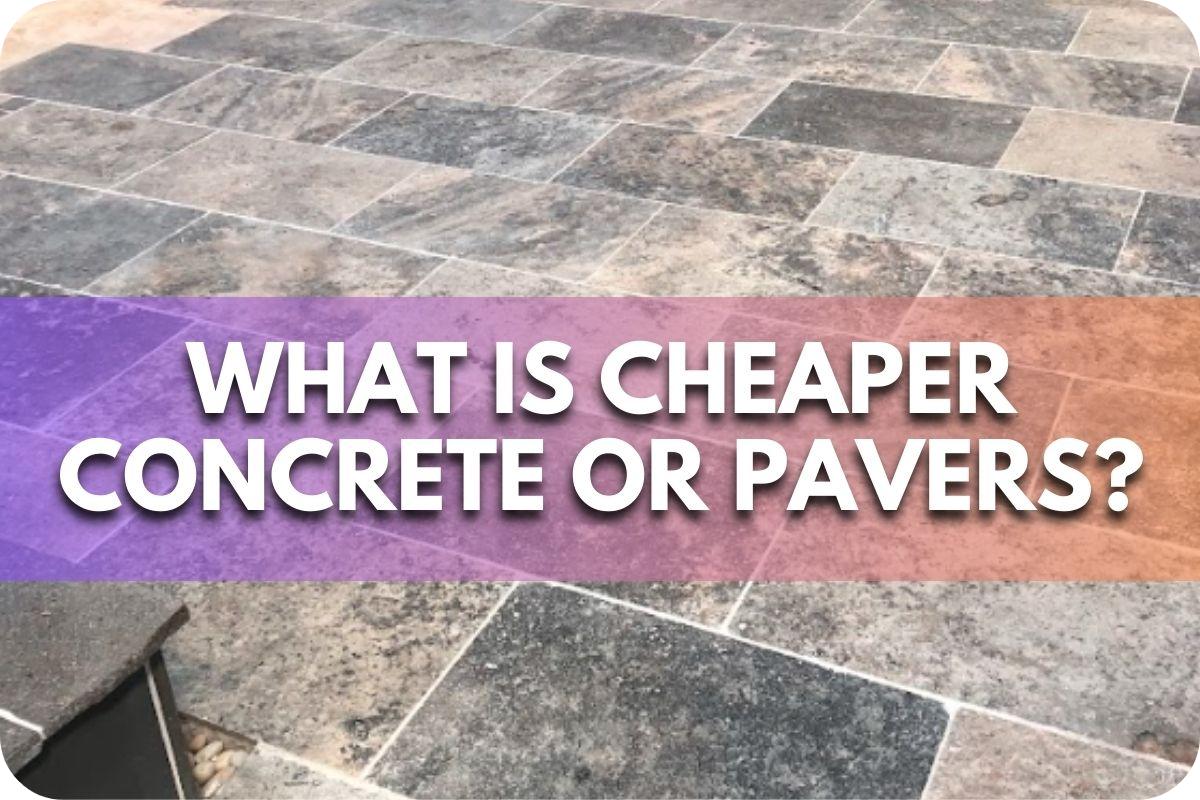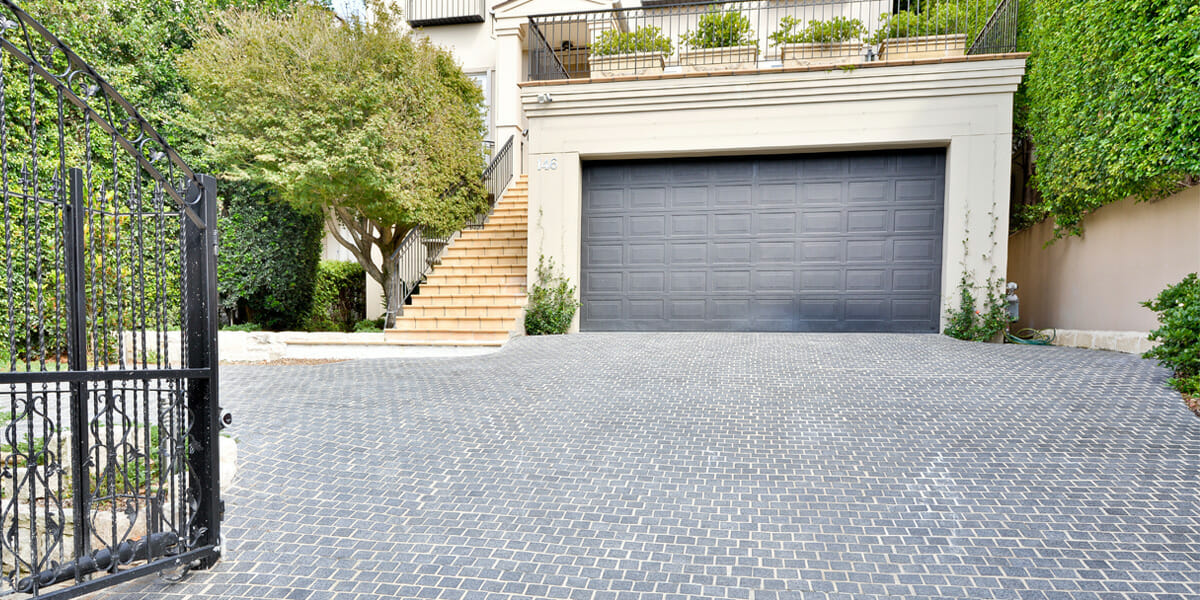
Choosing between concrete and pavers for your next project can be daunting, especially when budget constraints are tight.
While concrete might seem less expensive upfront, the long-term maintenance and lack of flexibility could inflate costs, leaving you questioning your decision as cracks appear and repairs mount.
This article breaks down the costs and benefits of both materials, offering a clear comparison to help you decide. Whether you’re paving a driveway or laying a patio, understanding the true cost implications will ensure you make a cost-effective choice.
What Is Cheaper: Concrete or Pavers?
Concrete is generally cheaper than pavers in terms of initial installation costs. However, pavers can be more cost-effective in the long run due to their durability and ease of repair. Pavers also offer greater design flexibility and can enhance property value, making them a worthwhile investment for those considering long-term aesthetics and functionality.
Overview of Concrete
Is a versatile and durable building material widely used in construction due to its strength, affordability, and adaptability.
Made from a mixture of cement, sand, gravel, and water, it hardens over time to form a solid surface. This makes it suitable for various applications, including driveways, patios, and pathways.
Concrete offers a seamless, uniform finish that can be customised with stamping, colouring, or texturing to enhance its aesthetic appeal. Its longevity makes it a cost-effective choice, as properly installed and maintained concrete can last for decades.
However, concrete may crack under extreme temperature changes or heavy loads if not reinforced correctly.
Overview of Pavers
These are individual blocks or tiles made from materials like concrete, brick, or natural stone, designed for outdoor surfaces such as driveways, patios, and pathways.
They offer a highly customisable option, available in various shapes, colours, and patterns, allowing for unique and visually appealing designs.
One of the key advantages of pavers is their durability and resistance to cracking, as their segmented structure can withstand shifting ground or temperature fluctuations.
If a paver becomes damaged, it can be easily replaced without disturbing the surrounding area, making repairs cost-effective and straightforward.
However, pavers typically require a higher initial investment compared to concrete and need proper installation to prevent shifting or sinking over time.
Cost Comparison Factors
Several factors influence the cost comparison between concrete and pavers, making it essential to evaluate the specific needs of your project.
The initial cost of materials and installation is often lower for concrete, as it involves fewer labour-intensive processes. However, stamped or decorative concrete can significantly raise expenses.
Pavers generally involve higher initial costs due to material expenses and skilled installation. However, their segmented design offers long-term savings, as damaged units can be easily replaced.
Different types of pavers, such as concrete, brick, and natural stone, provide versatile options for durability, aesthetics, and customisation to suit any project.
Installation Cost
Concrete installation is typically more affordable due to its straightforward process. It involves pouring, levelling, and curing, making it faster and less labour-intensive.
Additional customisation, such as stamping or staining, can slightly increase costs but remain relatively economical.Pavers, on the other hand, require more labour and precision. Each paver is laid individually on a compacted base, which demands time and skilled expertise to ensure proper alignment and stability. This makes the installation process more expensive. Additionally, premium materials, such as natural stone pavers, can further elevate costs.
Maintenance and Repair Costs
Concrete generally requires less maintenance but can develop cracks over time, particularly in areas with extreme weather or heavy loads.
Repairs often involve patching or resurfacing, which can be costly if the damage is widespread. Regular resealing is advisable to protect the surface and extend its lifespan.
Pavers, on the other hand, demand more frequent upkeep but offer a practical advantage for repairs. Individual pavers can be easily replaced if damaged, avoiding the need for large-scale work.
However, to maintain their stability and appearance, pavers require periodic cleaning, sealing, and replenishing of joint sand to prevent weed growth and shifting.
Durability
Concrete, when installed correctly, is durable and long-lasting but can crack under shifting soil or extreme conditions. Is it better to use pavers or concrete? Pavers may be more resilient, offering flexibility and easy repairs for long-term reliability.
Repairs can be expensive and may require resurfacing, which can disrupt the appearance of the surface.
Pavers, by contrast, are highly durable and better equipped to handle ground movement due to their segmented design.
They are less likely to crack, and individual units can be replaced easily if damaged, making repairs straightforward and cost-effective. This feature also makes pavers ideal for areas subject to high traffic or natural shifts in the soil.
Aesthetic and Design Considerations
Concrete offers a clean, uniform finish that works well for minimalist or modern aesthetics. It can be customised with techniques like stamping, staining, or texturing, enabling it to mimic premium materials such as stone or tile. These enhancements provide an affordable way to elevate its visual appeal while maintaining simplicity.
Pavers, on the other hand, are highly versatile and visually dynamic. Available in a wide range of shapes, colours, and materials, they enable intricate patterns and personalised designs suited to various styles, from classic to contemporary. Their segmented layout adds texture and character, making them ideal for creating standout spaces.
Environmental Sustainability
Concrete production has a notable environmental impact, primarily due to the high CO₂ emissions associated with cement manufacturing. While this contributes to its carbon footprint, advancements like using recycled aggregates and low-carbon concrete mixes are improving its sustainability.
Pavers can be a more eco-friendly option, particularly when made from natural or recycled materials. Permeable pavers are especially beneficial, as they allow water to infiltrate the ground, reducing surface runoff and aiding groundwater recharge.
Additionally, many pavers are locally sourced, minimising transportation emissions and environmental impact.
Long-term Environmental Cost Considerations
Long-term environmental costs are an essential consideration when evaluating concrete and pavers. Concrete, while durable, has a significant environmental footprint due to the energy-intensive production of cement, which contributes to greenhouse gas emissions.
Over time, cracked or deteriorating concrete may require complete replacement, adding to material waste and landfill impact.
Pavers offer advantages in long-term sustainability, particularly with permeable options. These allow water infiltration, reducing surface runoff and supporting groundwater replenishment, which is crucial in urban areas prone to flooding.
Pavers are also easier to repair, as damaged units can be replaced individually, minimising waste.
Conclusion
Choosing between concrete and pavers depends on your budget, design preferences, and maintenance needs. Concrete offers affordability, while pavers excel in durability and customisation.
Assess your priorities to make an informed decision. For reliable advice and installation services, consider reaching out to Splendour In Stones trusted experts committed to delivering high-quality solutions tailored to your project’s requirements. Contact them today to transform your outdoor space with confidence.
More To Explore

Grey Granite Cobblestones for Driveways: Strength and Style
Grey granite cobblestones combine strength, safety, and timeless appeal, making them a popular choice for Melbourne driveways and outdoor spaces. Their natural flamed texture offers

Granite Wall Cladding Melbourne: Modern and Classic Appeal
Granite wall cladding brings both modern sophistication and classic charm to Melbourne architecture. Known for its durability and natural beauty, granite transforms façades, feature walls,


